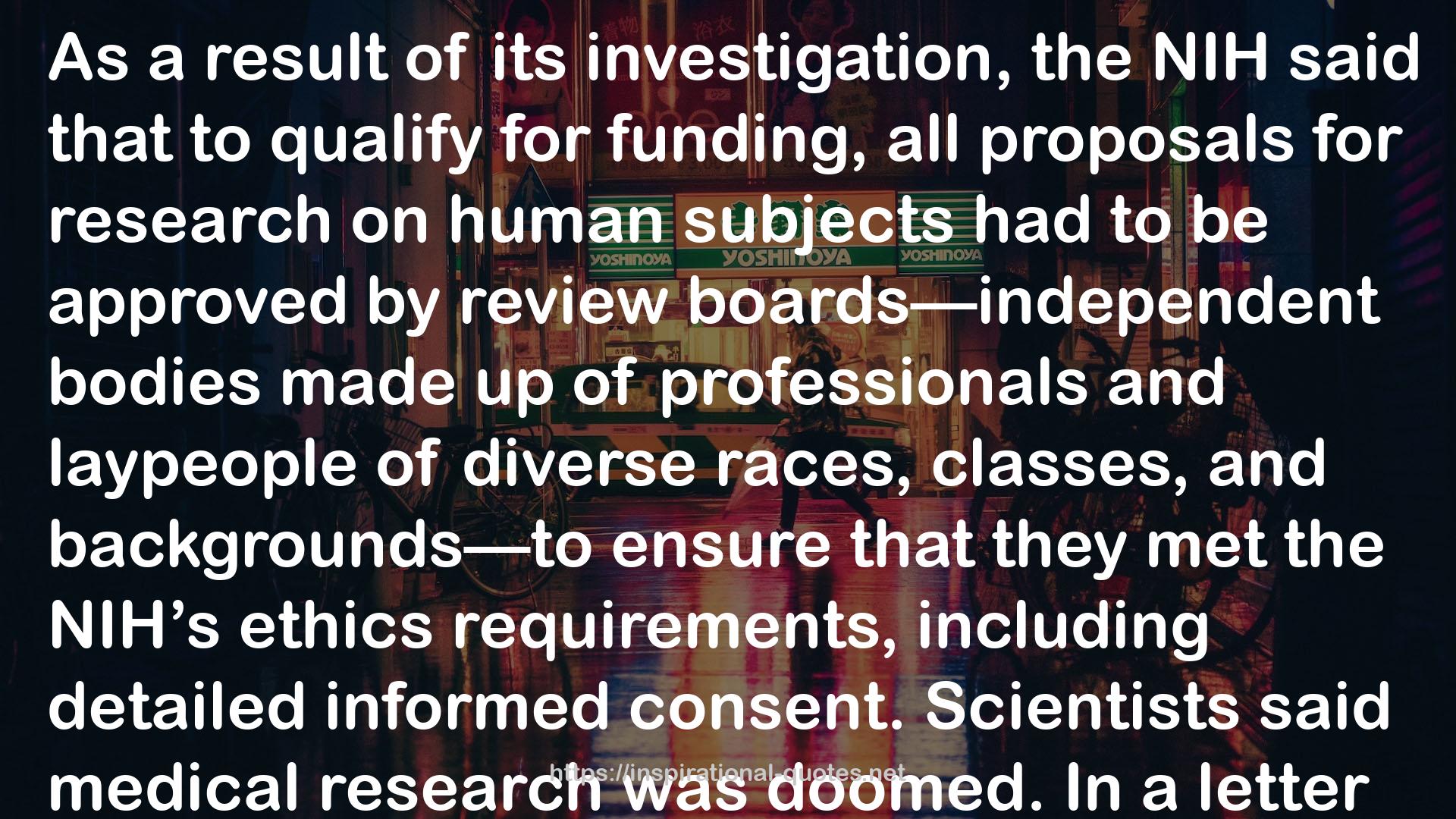" As a result of its investigation, the NIH said that to qualify for funding, all proposals for research on human subjects had to be approved by review boards—independent bodies made up of professionals and laypeople of diverse races, classes, and backgrounds—to ensure that they met the NIH’s ethics requirements, including detailed informed consent. Scientists said medical research was doomed. In a letter to the editor of Science, one of them warned, “When we are prevented from attempting seemingly innocuous studies of cancer behavior in humans … we may mark 1966 as the year in which all medical progress ceased.” Later that year, a Harvard anesthesiologist named Henry Beecher published a study in the New England Journal of Medicine showing that Southam’s research was only one of hundreds of similarly unethical studies. Beecher published a detailed list of the twenty-two worst offenders, including researchers who’d injected children with hepatitis and others who’d poisoned patients under anesthesia using carbon dioxide. Southam’s study was included as example number 17. Despite scientists’ fears, the ethical crackdown didn’t slow scientific progress. In fact, research flourished. And much of it involved HeLa. 18 "
― Rebecca Skloot , The Immortal Life of Henrietta Lacks
